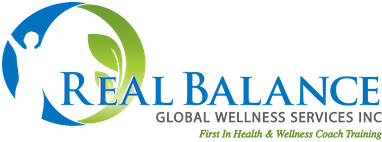Ten Ways To Coach Through Barriers To Change – Part One – Outer Barriers To Lifestyle Improvement by Dr. Michael Arloski.

A key part of effective coaching is helping our clients to find a way over, under, around and through the barriers that get between them and their goals. The best-laid wellness plans are inevitably challenged by some combination of “life getting in the way”, lack of environmental support, or sometimes even the “push-back” resistance from peers.
The other side of this coin are the “internal barriers” that also block our progress. These are composed of our personal belief systems, values, and self-talk, including the “inner critic” or “gremlin” talk that sabotages our efforts at change. We will address the internal barriers in a later article.
We’ve all seen the efforts of clients, family and friends derailed when a source of stress arises, there is a break in routine, a spouse or partner objects to them using time for self-care, families rebel against dietary changes, etc. Someone’s workload increases, money gets tight, an aging parent’s health worsens, and the person resumes smoking, drops their healthy eating habits, increases their amount of sedentary activity and so forth. When attempting lifestyle improvement alone this is when progress halts or even regresses.
When a person is working with their wellness coach this is where support, creativity, strategic thinking and real fun comes into the coaching process. Let’s look at how the wellness coach can employ various skills and strategies to help their client create lifestyle change that lasts.
 Start with your strengths!
Start with your strengths!
1. Use a strengths-based, positive psychology approach. Approaching a challenge to change with the usual “What’s wrong and how can we fix it?” style is kind of like asking a “Why?” question. The usual response is… “I don’t know.” Instead take complete inventory of the situation first getting a very accurate picture of “what is”. The effective wellness coach will draw upon earlier foundational work with their client and bring forth the strengths that the client has that they can make use of in meeting this particular challenge. For example, one client of mine was in a great rehabilitative exercise program for her surgically repaired knee when “life happened”. Remembering how she had earlier described meeting other scheduling challenges at work with great flexibility and creativity, I challenged her to use those same attributes to deal with her new dilemma. Her energy surged and she came up with a solution that got her back on track.
2. Process the feelings behind the challenge. While this might be considered part of the “internal work” that we’ll focus on later, most coaches find that it is hard to come up with a new strategic solution without addressing the emotions that charge the situation. Once the client has had a change to share in a safe and accepting (nonjudgmental) relationship how they are frustrated, disappointed, resentful, angry, sad, etc., they can more clearly assess their circumstances and face the challenge with more ability to see different options.
3. Employ strategic thinking. In chapter nine of Wellness Coaching For Lasting Lifestyle Change I elaborate on many strategies for helping clients face challenges to their own lifestyle improvement. Help your client consider options based upon their own values and their “true priorities”. Is delegation a useful strategy in this case and what is already keeping the client from implementing it? Help them run their time-demanding challenges through the classic urgent-important matrix. Help them answer the critical question of “Who is responsible for what?” Use your different perspective to help your client look at their challenges from a new angle instead of simply recommending solutions from your own vantage point.
4. Don’t “jump to solution”, use readiness for change theory. As you and your client come up with ideas of what action to take, slow down. While it may seem like powerful coaching to request action early and often, it too frequently ends up leading to premature moves that fail. When it comes to this specific behavioral change, this specific challenge to it, what is your client ready to do? Do they need further contemplation? More information and preparation? Or are they ready to take action of some sort?
5. Co-create a plan with an “experimental” attitude. Working together with your client, come up with a plan of action that is concrete, realistic and attainable. Encourage them to look at the steps they take to deal with their challenge as an “experiment”, not as a total success or total failure type of risk.
6. Link action steps with motivation to be well. Help your client affirm that they are taking these steps in order to pursue their own health and wellness. Help them get back in touch with their vision of being healthy and well and what is motivating them to engage in these wellness efforts.
[caption id="attachment_300" align="alignleft" width="400" caption="Sometimes you just have to "go for it"!"] Sometimes you just have to "go for it"!
Sometimes you just have to "go for it"!
7. Congruent, but not necessarily comfortable. The goals your client is shooting for and the actions they are taking to get there must be congruent with their own values. However, nobody ever said anything about it having to be entirely comfortable! Most real growth and the facing of most difficult challenges takes place out there on that uncomfortable edge. Encourage your client to draw upon their own strength, courage and endurance to persevere and succeed.
8. Help your client succeed by helping them be accountable to themselves. The fundamental coaching process of accountability ensures that barriers are faced, plans followed through on, and efforts maintained.
9. Coach For Connectedness. From the beginning of the process build greater connectedness. Who can the client reach out to for help, additional accountability and support in their efforts? Once again going it alone may not be the best strategy. Help your client process their resistance to asking for help. Make this part of the plan throughout. Many of the barriers our clients face are interpersonal ones. Coach them around ways to communicate more effectively, create agreements with others (rather than have assumptions and expectations), and be clear about what they have control over and what they do not.
10. Celebrate success. Acknowledge and affirm your client’s success and help them deal with continued setbacks. Provide support and help them “give themselves credit” for what they are doing to improve their lives.
In the next article in this series we will look at the internal barriers that get in the way when we attempt lifestyle improvement.
Dr. Arloski will be hosting a Free Webinar on this topic Wednesday, Jan. 26th (12:00-12:30 pm EST). Space is limited, register now! E-mail








Only registered and logged in readers can leave comments.